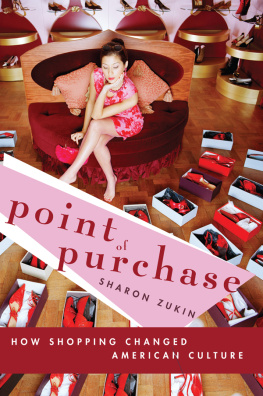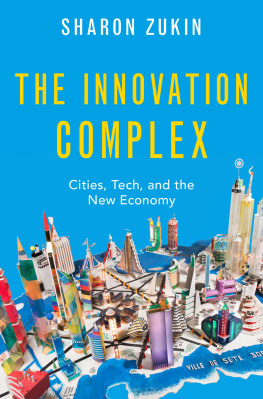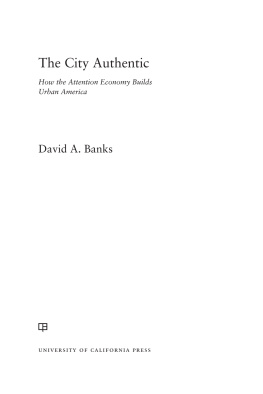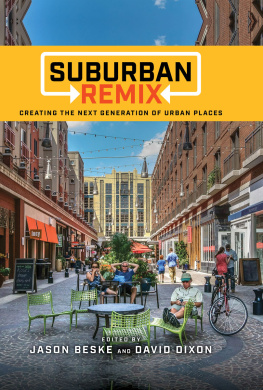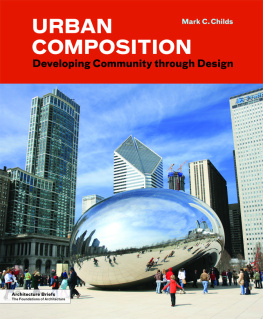NAKED CITY
NAKED CITY
Sharon Zukin
THE DEATH AND LIFE
OF AUTHENTIC
URBAN PLACES


Oxford University Press, Inc., publishes works that further
Oxford Universitys objective of excellence
in research, scholarship, and education.
Oxford New York
Auckland Cape Town Dar es Salaam Hong Kong Karachi
Kuala Lumpur Madrid Melbourne Mexico City Nairobi
New Delhi Shanghai Taipei Toronto
With offices in
Argentina Austria Brazil Chile Czech Republic France Greece
Guatemala Hungary Italy Japan Poland Portugal Singapore
South Korea Switzerland Thailand Turkey Ukraine Vietnam
Copyright 2010 by Sharon Zukin
Published by Oxford University Press, Inc.
198 Madison Avenue, New York, New York 10016
www.oup.com
Oxford is a registered trademark of Oxford University Press.
All rights reserved. No part of this publication may be reproduced,
stored in a retrieval system, or transmitted, in any form or by any means,
electronic, mechanical, photocopying, recording, or otherwise,
without the prior permission of Oxford University Press.
Library of Congress Cataloging-in-Publication Data
Zukin, Sharon.
Naked city : the death and life of authentic urban places / Sharon Zukin.
p. cm.
Includes bibliographical references and index.
ISBN 978-0-19-538285-3
1. City and town lifeNew York (State)New York.
2. UrbanizationNew York (State)New York.
3. Community development, UrbanNew York (State)New York. I. Title.
HN80.N5Z85 2009
307.14164097471dc22 2009038248
9 8 7 6 5 4 3 2 1
Printed in the United States of America
on acid-free paper
For my students and for students of cities everywhere
Is the beginning of a given work its real beginning, or is there some other, secret point that more authentically starts the work off?
Edward Said, Beginnings
CONTENTS
PREFACE
This is a good moment to take stock of recent changes in cities that we think we know well, changes that both surprise us in the daily routine of walking through our neighborhoods and contradict the images in television replays and earlier films noirs that we see in popular culture. Naked City is one of those films noirs, a black-and-white police thriller made in 1948 on the streets of New York, a film that tracks a murder suspect from Park Avenue to the Lower East Side and finally to an end with no escape in sight, high over the East River, on the Williamsburg Bridge. Realistic in its time, especially because it was filmed on location, Naked City contrasts the brute power of New Yorks skyscrapers with the cultural vitality of its streets and the everyday lives of the men and women who work in small shops and diners, drive taxis, clean offices, and solve crimes. There are eight million stories in the naked city, the voice-over narrator famously declares. But he might just as well have said: It is these stories, these buildings, and these streets that create the authentic city of our lifetime.
Today this black-and-white city seems less permanent and less authentic than it did in 1948. During the past few years, cities have become sites of massive redevelopment, with bulldozers tearing down old buildings, giant shovels digging holes in the ground so other big machines can lay new foundations, and cranes popping up like push pins from the ground. Since 2008, though, a worldwide economic crisis has stilled the financial weapons of mass construction. More than a periodic bust in the real estate boom that fueled a global economic expansion, this crisis halted the ebb and flow of origins and new beginnings that continually wash over the citys shoresthe ebb and flow of economic growth, immigration, and, most recently, gentrification.
Just before the crisis broke, New Yorkers were complaining about their disenchantment with the city. Too many favorite landmarks had disappeared, replaced by faceless towers. One neighborhood after another had lost its small scale and local identity. People who had been in place for what seemed like forevertenement dwellers, mom and pop store owners, whole populations of artists and workers and people of colorwere suddenly gone. In their place we found gentrifiers, cocktail bars, Starbucks, and H&M. Though realists dismissed these complaints as blatant nostalgia and pointed out that cities are constantly changing, cynics, who are often the most idealistic city lovers, insisted that New York was no longer authentic. The city, they said, had lost its soul.
I am one of those New Yorkers. If I am not yet disenchanted, I too have been dismayed by the way the city has morphed from a lumbering modern giant to a smooth, sleek, more expensive replica of its former self. I have seen this not just as a gradual or even inevitable process of revitalization but as a determined, concentrated process of destruction, beginning in the 1980s and speeding up since then. I dont call my dismay nostalgia. I dont miss the street crime or heroin trade or graffiti-covered subway cars. I dont think that poor tenants should be condemned to live forever in old-fashioned apartments with bathtubs in the kitchen because the landlord wont build a bathroom. I do miss the look and feel of neighborhoods whose diversity was tangible in the smells and sounds of ethnic cooking, experimental art galleries and performance spaces, and faces and voices of men and women who came from everywhere to create the distinctive character of the streets.
I can still find these neighborhoods in Brooklyn, the Bronx, and Queens, where formerly Irish, Jewish, and Italian shopping streets are now multiethnic patchworks of Chinese, Russians, Latinos, and Pakistanis. The artists district of SoHo, the East Village countercultural scene, and the indie rock area of Williamsburg have only moved to cheaper neighborhoods farther from Manhattan. Harlem has been upgraded and racially integrated. But the citys historic diversity of uses, local specializations, small stores, and cheek-by-jowl checkerboard of rich people, poor people, and people broadly in the middle has been submerged by a tidal wave of new luxury apartments and chain stores. Global investment firms have bought thousands of low-cost apartment houses and prepare to raise the rent or sell them as condos, driving out older and poorer tenants. The fertile urban terroir of cultural creation is being destroyed by the conspicuous displays of wealth and power typical of private developers and public officials who build for the rich and hope benefits will trickle down to the poor, by the promotions of the media who translate neighborhood identity into a brand, and by the tastes of new urban middle classes who are initially attracted to this identity but ultimately destroy it. These forces of redevelopment have smoothed the uneven layers of grit and glamour, swept away traces of contentious history, cast doubt on the idea that poor people have a right to live and work here tooall that had made the city authentic.
The rebuilding of public spaces since the 1980s shows signs of the same homogenizing forces of redevelopment. Like the World Trade Center site, which is partly a place of mourning and partly a spectacle for mass consumption, these spaces are funded by private money and focus on the two issues that became our preoccupations after 2001: shopping and security. Public parks that are now managed by private conservancies and shopping areas that are governed by Business Improvement Districts do enjoy cleaner streets and greater public safety. But we pay a steep price for these comforts, for they depend on forces that we cannot controlprivate business associations, the police bureaucracy, and security guard companiessignaling that we are ready to give up on our unruly democracy. This is another way the city loses its soul.
Next page

